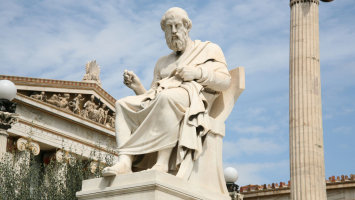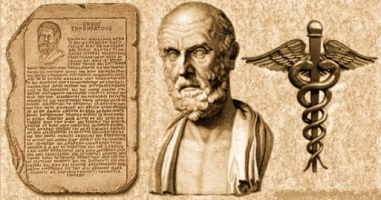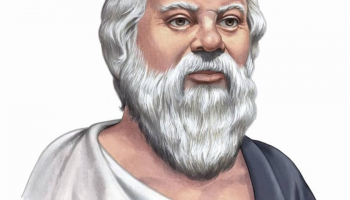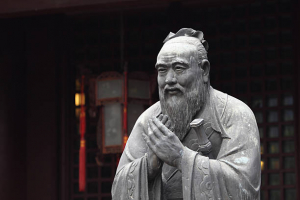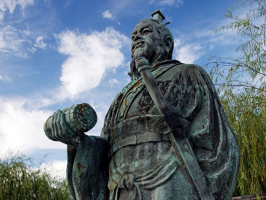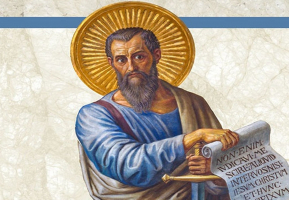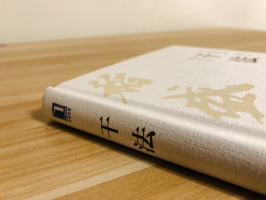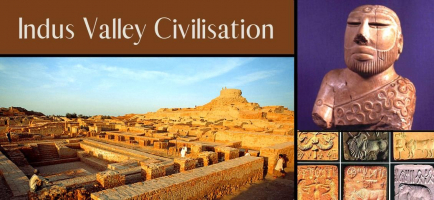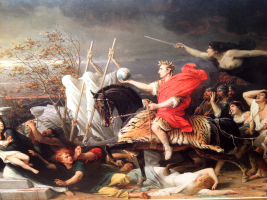Top 5 Contributions of Hammurabi
The sixth Amorite monarch of the Old Babylonian Empire, Hammurabi (c. 1810–c. 1750 BC), ruled from approximately 1792 BC to approximately 1750 BC. The Code of ... read more...Hammurabi, which he claimed to have received from Shamash, the Babylonian deity of justice, is what made him most famous. During his reign, he has made lots of contributions to make Babylon become a powerful empire. Let's learn about contributions of Hammurabi with Toplist!
-
From the Tigris and Euphrates river valleys, Hammurabi grew his kingdom, and he firmly established his dominion over the entire realm. In the second millennium BC, Hammurabi was revered above all previous rulers and proclaimed to be a living deity, giving rise to his common moniker Hammurabi-ili, which translates to "Hammurabi is my god." Three noteworthy accomplishments that he made that were remembered long after his death are that he won wars, advanced justice, and brought about peace throughout the empire.
Hammurabi succeeded Sin-muballit in approximately 1792 BCE, while he was still a young man. However, as was common in Mesopotamian royal courts at the time, he was likely already in charge of some formal responsibilities in the rule of the kingdom. The city of Isin, which functioned as a barrier between Larsa and Babylon, was conquered by Rim-Sin of Larsa, who was in charge of the entire south of Babylonia, in the same year. Later, Rim-Sin emerged as Hammurabi's main adversary. The southern enemy Larsa, whose King Rim Sin I had beaten Hammurabi's father in war, was no match for Babylon when Hammurabi became king in 1792 B.C. Hammurabi, however, immediately began to fortify his city-state. Susan Wise Bauer, a historian, claims that he was the first Babylonian king to build defenses around the city. Hammurabi also made an effort to win over his people, canceling all of their debts in a declaration that he would make four more times over the remainder of his rule.
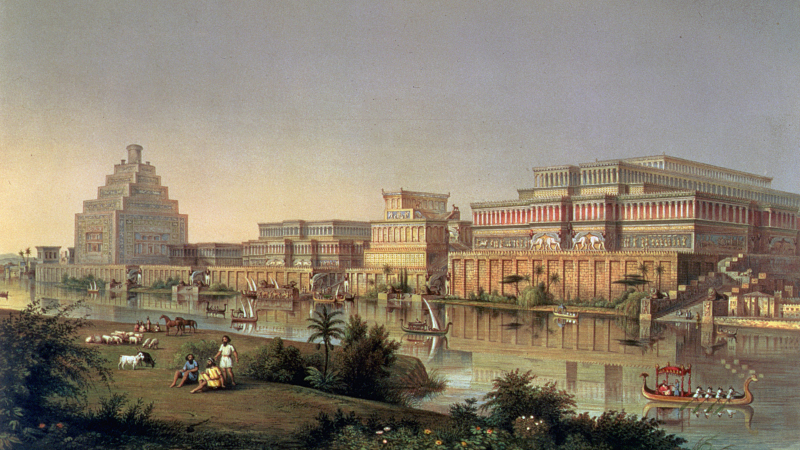
Photo: Grunge 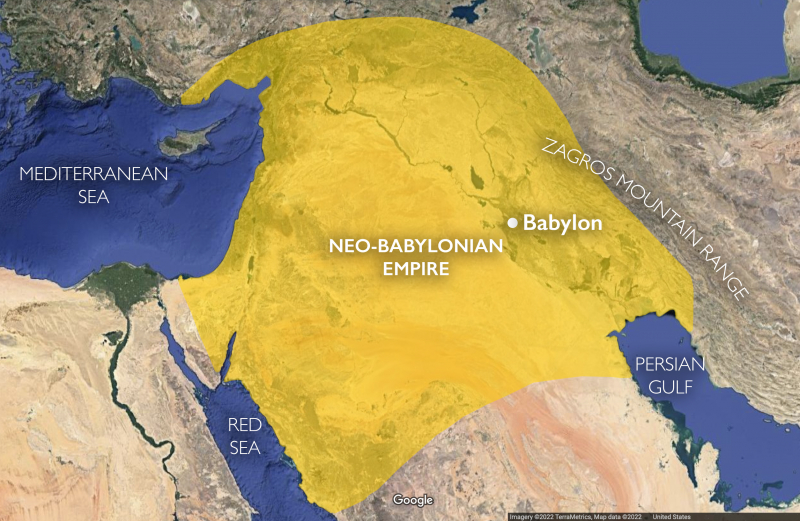
Photo: Khan Academy -
When talking about contributions of Hammurabi, code of Hammurabi can not be missed. While spending a lot of time developing his empire, Hammurabi also focused on the Mesopotamian constitution, establishing an unparalleled judicial system. The Code of Hammurabi, which he codified, was the most comprehensive body of laws ever created. These laws were engraved on 12 stones and put on display for everyone to see. The 282 rules in the code were written in the following format: "If... then..." These principles comprised everything from property, marriage, and family connections to technical procedures, crime, and punishment. They were divided into domestic, social, and commercial laws. At the top of the stele is a relief depiction of Hammurabi and Shamash, the sun deity and god of justice in ancient Babylonia. There are roughly 4,130 lines of cuneiform writing below the relief, of which one fifth is made up of a poetic prologue and epilogue, while the other four fifths are typically referred to as the rules. Hammurabi asserts in the prologue that the gods gave him the right to rule in order "to prevent the mighty from abusing the vulnerable."
Laws were in place to safeguard women, children, slaves, and property, and famine, flood, and drought victims were taken care of. Crime and punishment were first proposed by Hammurabi. The seriousness of the crime determined the severity of the punishments, which were not predetermined. The following are some code specifics: In some instances, the penalty was a thousand times harsher than the offense, according to gender and class, the terms and circumstances were modified, the law guaranteed workers a minimum salary and a person was given the death penalty if they gave a false testimony.
Long after Hammurabi's demise, the code was still in use.
Despite the ambiguity surrounding these concerns, outside of Assyriology, Hammurabi is acknowledged as a significant character in the history of law and the text as a genuine legal code. Along with other legislators, Hammurabi is shown in relief in the U.S. Capitol. The United Nations' headquarters in New York City and the Pergamon Museum in Berlin both have reproductions of the stele on display.
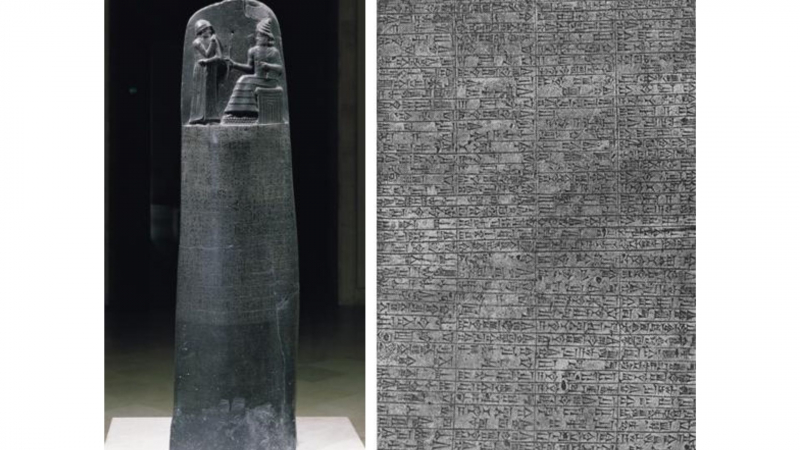
Photo: Evangel Classical School 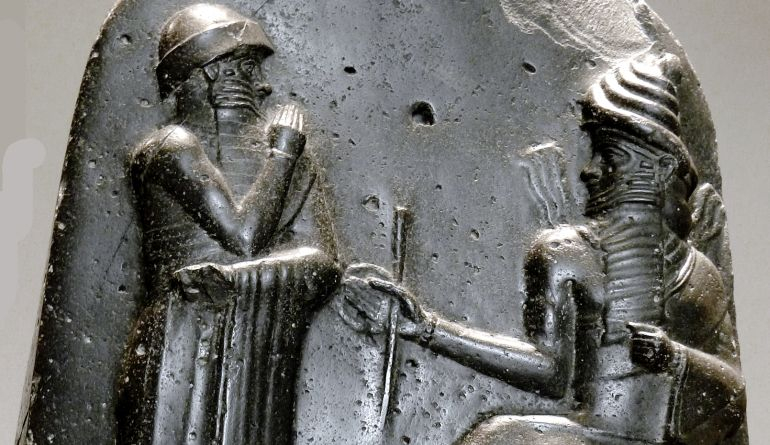
Photo: Grunge -
The next contributions of Hammurabi are the contributions to the internal developments and architechture. After establishing his vast empire from a relatively tiny state, Hammurabi focused on the advancement of the kingdom's internal structure. He built a huge infrastructure, including temples and public buildings, and was one of the best managers, overseeing many of the projects himself. Hammurabi made sure that Babylon would be remembered long after his death by constructing roads, gardens, and lakes that were often erected merely for aesthetic purposes. Hammurabi further bolstered himself politically by starting a series of significant infrastructure projects, much like a current governor or senator who increases his popularity by getting roads fixed and bridges erected in his home state. He erected temples, granaries, and palaces, a bridge across the Euphrates River that allowed the city to grow on both banks, and a massive irrigation system that also served as a flood-protection system for the surrounding region.
His investments were profitable, as Babylon gradually grew rich and prosperous. Hammurabi, however, also made sure that everyone understood that he was in charge of all the good fortune. He made sure everyone understood, for instance, that he was merely fulfilling his obligation to the gods who had given him the land when he built his canal.
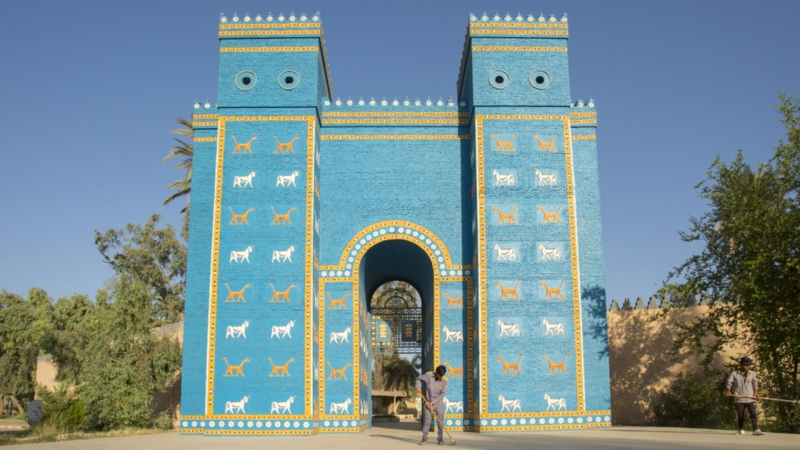
Photo: AI Jazeera 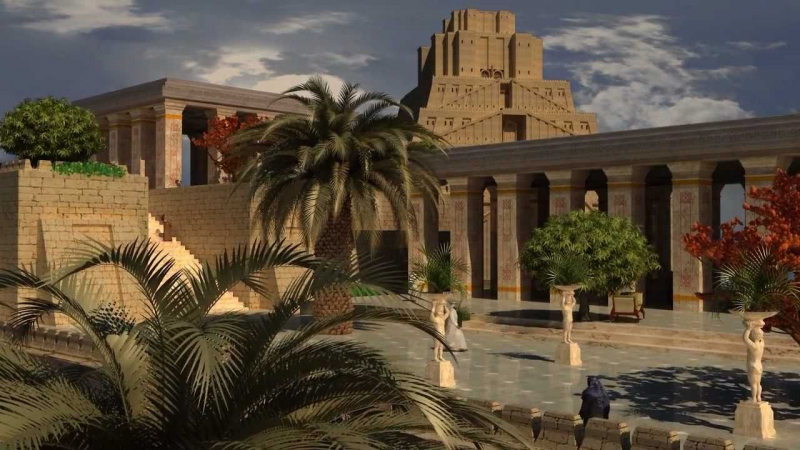
Photo: Realm of History -
During his long reign as emperor, Hammurabi not only expanded and maintained the empire but also defended it by collaborating with or attacking neighboring states. Hammurabi built canals throughout the city of Babylon as they offered an additional line of defense to stave off enemy attack. In order to defend the city from intruders, he also raised its walls. He was able to keep the city peaceful throughout his rule in this fashion. According to Stephen Bertman in the Handbook to Life in Ancient Mesopotamia, Hammurabi was strong enough to start conquering wars after spending several decades constructing Babylon. He attacked Eschunna in the east, Assyria in the north, Larsa in the south, and Mari in the west all in fast succession.
According to the Ancient History Encyclopedia, Hammurabi was skilled at using both force and diplomacy. He would create alliances with other kings and then sever them whenever it was practical. He also used cunning tactics to fight. One of his methods involved blocking the water supply to a rival city. Then he would either suddenly unleash the waters and cause a devastating flood to soften his target for his attack or he would use thirst to pressure its leaders into surrender.
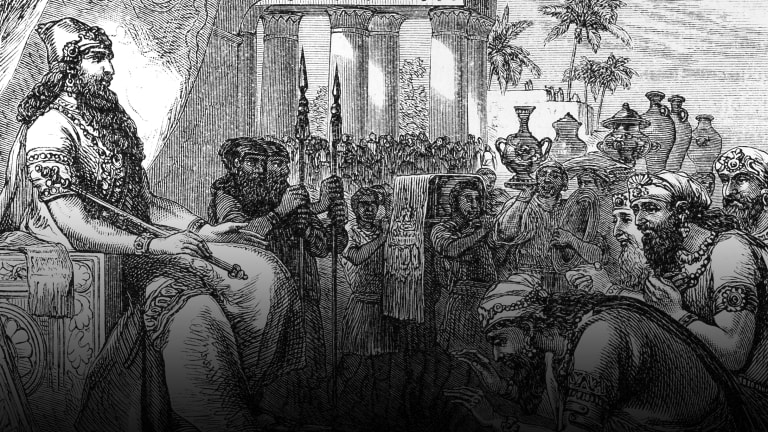
Photo: history.com 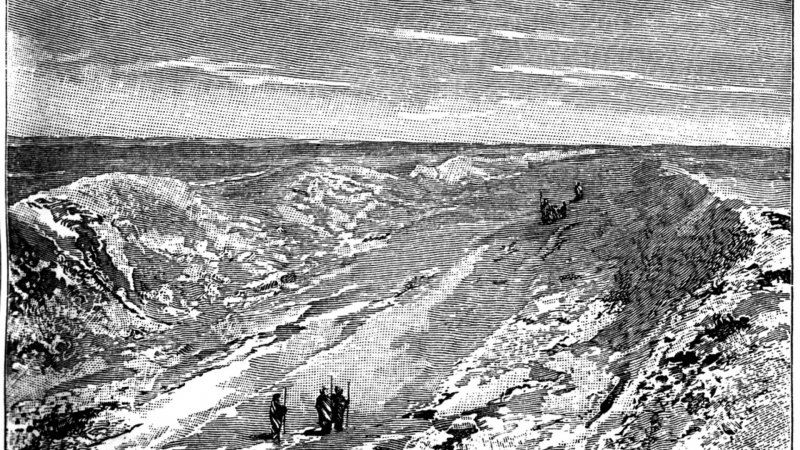
Photo: Florida Centre for Instructional Technology -
Hammurabi understood the importance of having a solid agricultural foundation for an empire. This is also one of the biggest contributions of Hammurabi. Hammurabi harnessed the water from these rivers and built canals to deliver water to all areas of the kingdom, enabling farmers to create improved agricultural practices. Babylon was located in the valley of the Tigris and Euphrates rivers. The fertile soils allowed the Babylonians to effectively raise fruit, vegetables, and other crops. The Sumerians left behind a tremendously advanced agricultural infrastructure, with vast irrigation canal networks, dams, and agricultural knowledge, which the new empire, with its capital in Babylon, did not need to add much to. However, because the Euphrates and Tigris Rivers were constantly altering their courses due to their frequent and destructive floods, new feeder canals had to be dug, and new dams had to be constructed.
The digging of a canal was unquestionably beneficial for everyone because areas in lower Mesopotamia could only be farmed when they were irrigated. In addition, the Hammurabi code addressed agriculture, including the leasing and cultivation of land as well as borrowing money to engage in agriculture and repaying it. These are evident in articles 42 to article 48, which set forth various degrees of sanctions for failure or negligence.
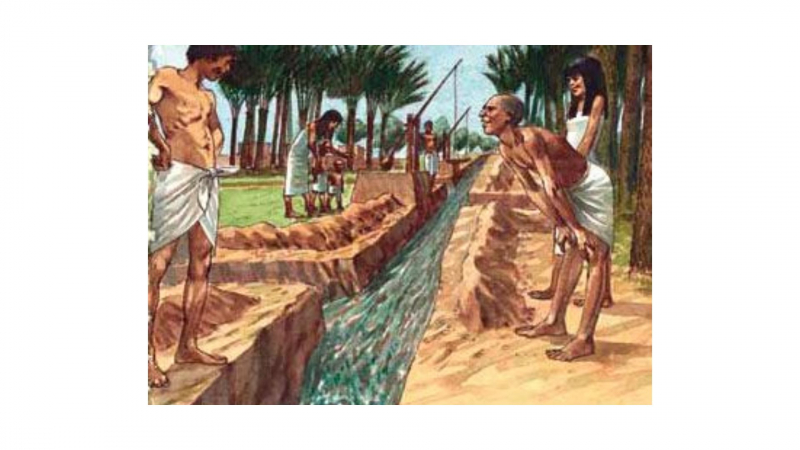
Photo: Pinterest 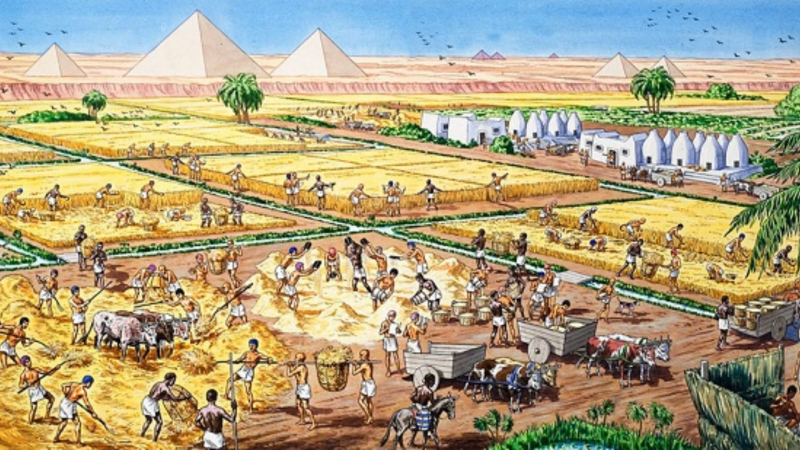
Photo: hotcore.info








